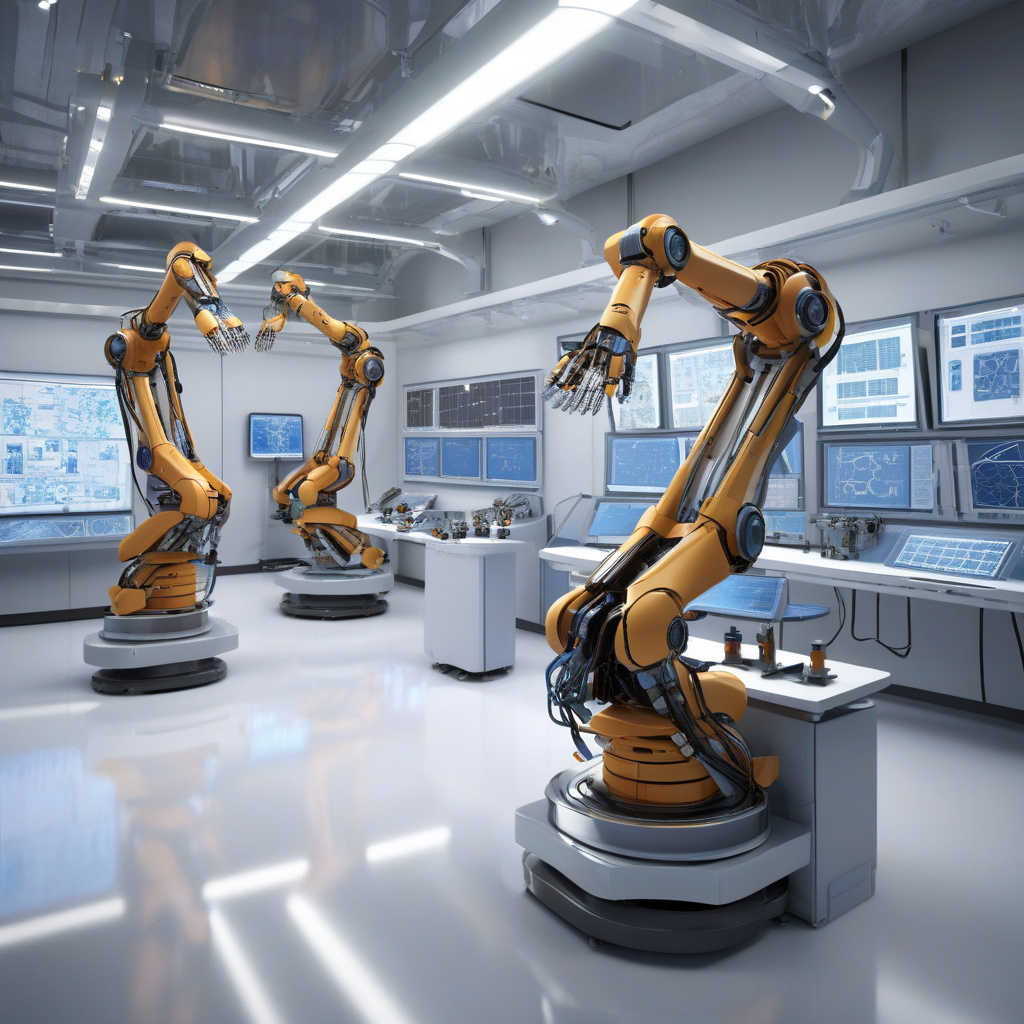World’s First Multi-Robot Quantum Lab in US Could Revolutionize Solar Cells, LEDs
Researchers at North Carolina State University have developed a first-of-its-kind self-driving laboratory that uses multiple robots working together to accelerate materials discovery. This innovative approach could revolutionize the fields of solar cells and LEDs, leading to groundbreaking advancements in renewable energy and lighting technology.
The world’s first multi-robot quantum lab is a remarkable feat of engineering and innovation. By harnessing the power of artificial intelligence, robotics, and quantum mechanics, researchers have created a cutting-edge platform for conducting experiments and testing materials at an unprecedented pace. This revolutionary lab is equipped with a fleet of robots that can work autonomously, allowing for continuous operation and data collection without human intervention.
One of the key applications of this groundbreaking technology is in the development of next-generation solar cells. Solar energy is a rapidly growing field, with increasing demand for more efficient and cost-effective solar panels. The multi-robot quantum lab enables researchers to rapidly test and optimize new materials for solar cells, leading to higher efficiency and lower costs. This could significantly accelerate the adoption of solar energy worldwide, helping to reduce reliance on fossil fuels and mitigate climate change.
In addition to solar cells, the multi-robot quantum lab has the potential to revolutionize the field of light-emitting diodes (LEDs). LEDs are widely used for lighting applications due to their energy efficiency and longevity. By using the lab’s advanced capabilities, researchers can develop new materials for LEDs that are more efficient, durable, and environmentally friendly. This could lead to the next generation of lighting technology, with applications ranging from residential lighting to commercial displays.
The impact of the world’s first multi-robot quantum lab extends beyond just solar cells and LEDs. The rapid pace of materials discovery made possible by this technology could have far-reaching implications for various industries, including electronics, healthcare, and telecommunications. By accelerating the development of new materials with unique properties, researchers can unlock new possibilities for innovation and create solutions to some of the world’s most pressing challenges.
Overall, the development of the world’s first multi-robot quantum lab represents a significant milestone in the field of materials science and engineering. This pioneering technology has the potential to drive major advancements in renewable energy, lighting technology, and beyond. As researchers continue to push the boundaries of what is possible with this innovative platform, we can expect to see exciting new developments that will shape the future of multiple industries for years to come.
#MultiRobotLab, #QuantumTechnology, #SolarInnovation, #LEDRevolution, #MaterialsDiscovery












